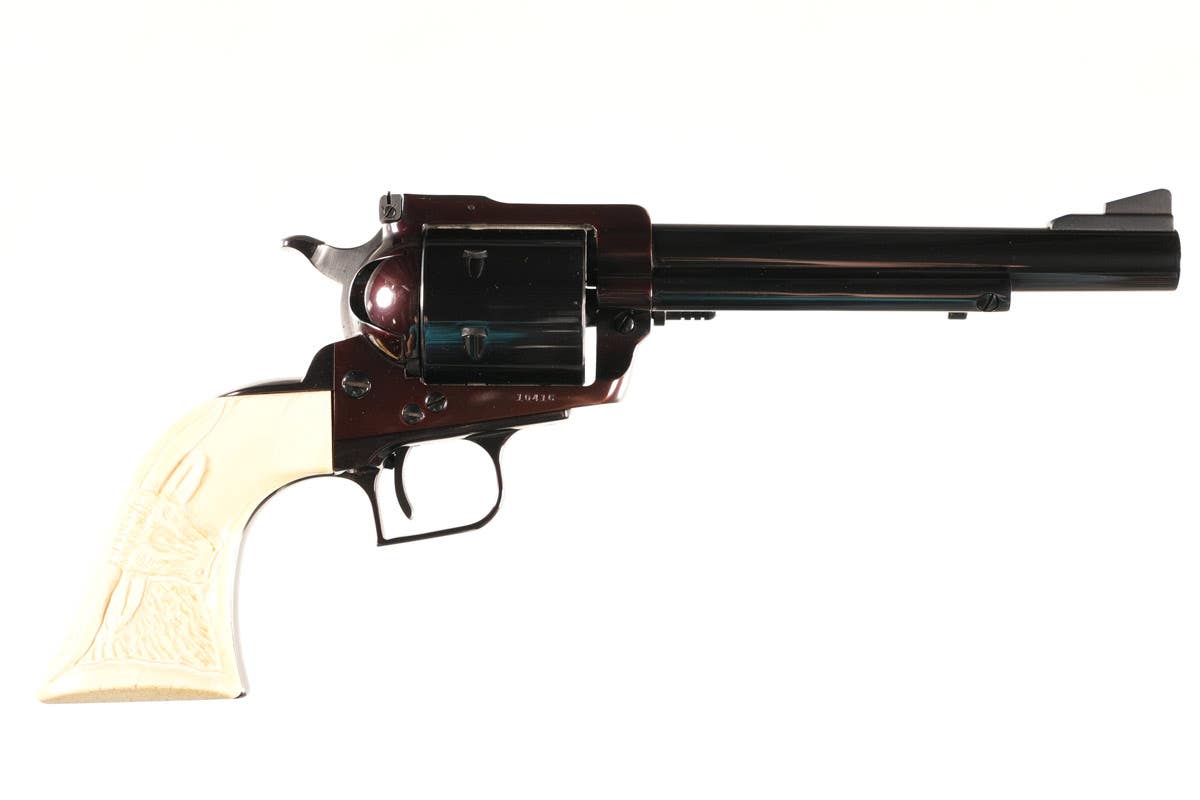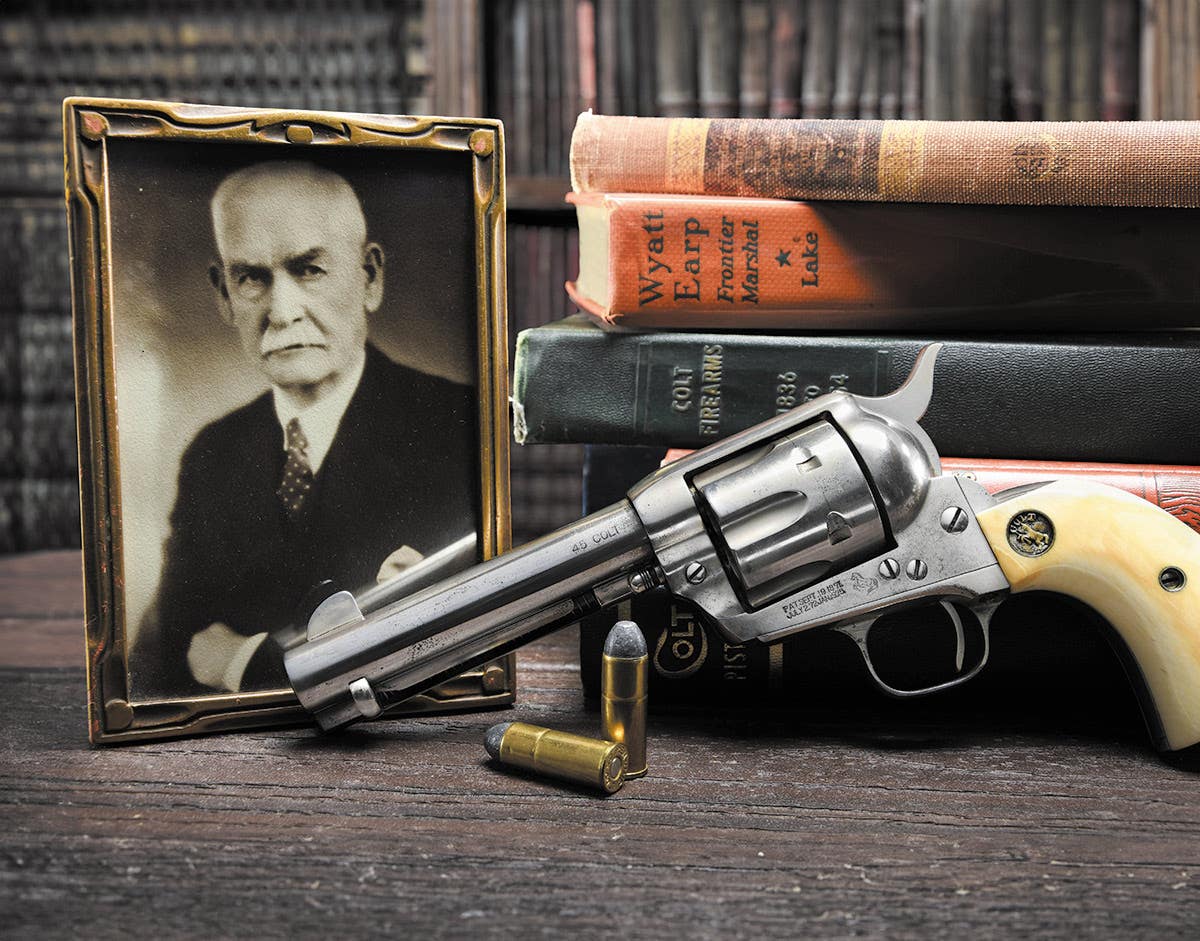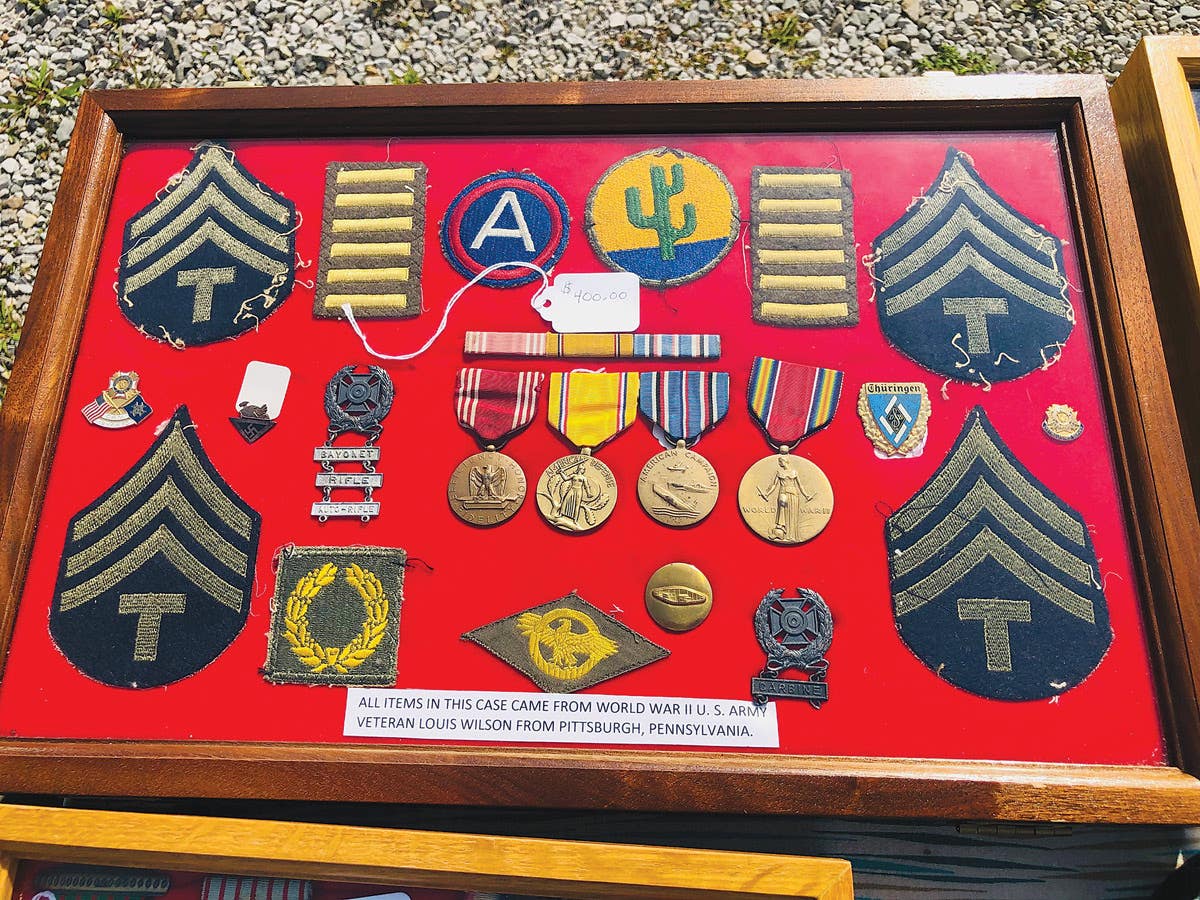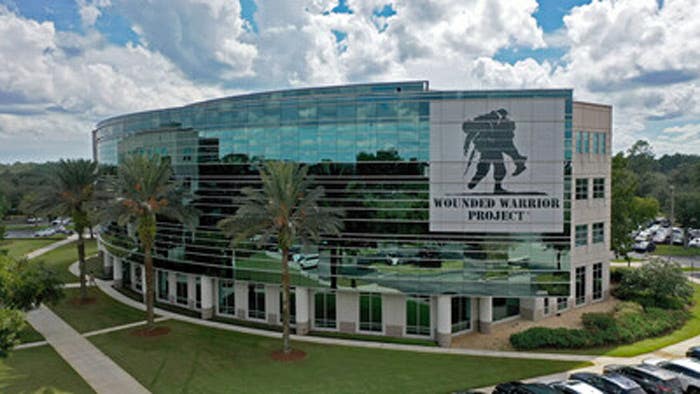Cowan’s firearms and militaria auction goes off with a bang
An Ames m1833 Texas officer’s dragoon saber that had been owned by the early Texas Republic and Confederate soldier recently sold for $37,375 to top Wes Cowan’s recent militaria auction.
Wes Cowan’s Auction House in Cincinnati held its Firearms and Militaria auction from Oct. 28-30. More than 2,200 lots were offered, ranging mainly from the period of the American Revolution to World War II. There was also a small selection of European armor from as early as the 15th century, a few lots of Indian and Persian armor, an admiral’s uniform from the Vietnam War, and some ephemera. Guns (including the sports rifle collection of Ohioan Robert Ross Weber), swords, knives, helmets, uniforms, flags, and ammunition comprised the bulk of the offerings. Overall it was a good sale for Cowan’s, despite that many lots went unsold.
“Even in times of economic uncertainty, the true firearms aficionados proved that there is no slowdown in the collecting world,” Lewis said. “We were satisfied with the results of the sale, and look forward to some big things coming to the block from Cowan’s in 2009.”
Heading the sales was an Ames m1833 Texas officer’s dragoon saber that had been owned by the early Texas Republic and Confederate soldier, Spruce McCoy Baird, which topped out at $37,375 including the 15 percent buyer’s premium, as all prices listed heretofore will include. It also included a tinder box owned by Baird and an ambrotype portrait of him, circa 1860. The sword, etched quill-back blade with military motifs, has a Texas star on the left side with the marking TEXAS between the star points and another star on the reverse blade.
One of only 18 such swords that were made, and one of only three now known to exist, it was discovered by Cowan’s during a routine Cincinnati, Ohio house call. Of the other two existing dragoon officer sabers, only one – the saber of Capt. John C. Hays, founder of the Texas Rangers – carries with it any provenance. A notarized letter from Baird’s descendents in Cincinnati attests to the Baird saber’s provenance.
An early Texas immigrant, Baird fought in the Mexican War for Texas Independence, became a judge for the territory of New Mexico, and was a colonel, leading the 4th Texas-Arizona Calvary for the Confederate Army. An eccentric character, Baird ended his days in Golden, Co.
The gun that drew the most interest among firearms enthusiasts was a .22 caliber Winchester rifle made in 1903 that was presented as a gift by William F. “Buffalo Bill” Cody to the 14-year-old son of a business associate, A.L. Sullivan. The gun boasts an inscription on the left side of the frame: To Aaron Sullivan from Col. William F. Cody “Buffalo Bill” 1904. It was the major part of a lot that included an unlimited free box seat pass to Cody’s Wild West Shows; a copy of The Last of the Great Scouts: The Life Story of Colonel William F. Cody, “Buffalo Bill” and autographed by him; 15 full boxes of Yellow Label Winchester .22 automatic cartridges; a deputy sheriff’s badge from Lancaster Co., Nebraska; a 14K gold railroad pocket watch; a walking cane with a gold L-shaped handle; and a signed affidavit attesting to the ownership by Sullivan’s family. It sold for $17,250.
“The truly fascinating thing about this gun is that Buffalo Bill personally took the time to special order and deliver this gun to the Sullivan family,” Lewis said. “We always knew Bill had been given literally thousands of gifts over the years by his friends and fans – but in all my decades in the business, this gun is the only example that I’ve seen of Buffalo Bill, the giver.”
Interestingly, a 1906 .22 caliber Winchester rifle without the Bill Cody accoutrements sold for $1,725.
A large assortment of European helmets was offered. Bringing the highest price was a Saxon Garde Reiter Officer m1907 helmet with a lion atop that sold for $19,550. The lion was worn in place of the spike for parades and state or gala occasions. The Saxon Garde began in Dresden in 1680 as the 1st Schweres Regiment and was the premier cavalry unit of the Saxon Army.
Also in abundance were Confederate swords and knives. Many came from the collection of Dr. R. Charles Griffith of Louisiana which comprised 235 lots that were mainly historical knives and Confederate swords. The highest price brought by a Confederate sword was from his collection and sold for $14,087.50. A Confederate staff officer’s sword, it had a 32 1/2-inch blade made by Froelich. The sword had a brass knuckle bow with pierced letters C.S.A, a brass barrel and pommel, and a leather and brass wire wrapped handle. Louis Froelich was a native of Bavaria, who started a uniform button factory in Wilmington, N.C. that he converted into an arms factory that made all sorts of cutting, sticking, and stabbing utensils. He became known as the “Sword Maker for the Confederacy.”
Most militaria with a Confederate vintage brought good prices. Two Confederate carbines, a .52 caliber Richmond Sharps carbine and a .50 caliber Morse carbine, also from the Griffith collection, went for $9,775. A .36 caliber Confederate Metropolitan Navy revolver belonging to Lieutenant William A. Webb also priced out at $9,775. Included with the pistol was a notebook full of research about Webb, a veteran of the Mexican War, who fought in the Civil War Battle of Hampton Roads in 1862 and was later promoted to commander of the Confederate naval forces at Savannah. This wasn’t the case for one of the auction’s highlights, a rare, seldom seen first version of the Confederate flag valued at up to $25,000. The handmade flag that measures 82 inches by 140 inches has a central star surrounded by a ring of 12 stars went unsold.
However, another flag, an early 13-star hand-sewn and well worn U.S. flag, whose estimated value was no more than $1,500 because of its condition, brought $10,925. The flag, measuring 27 inches by 46 inches, has several patches sewn in it and a 4-5-4 star pattern.
Among the many American and European military uniforms offered was the coat of World War II Brigadier General Hugh John Casey that included the general’s stars, the three ribbon bars, and his hat. It brought the auction’s highest price for a uniform, $4,600, nearly ten times its estimated value of $400-$600. Casey, a graduate of the U.S. Military Academy in West Point in 1918, designed the Pentagon. He also served with General Douglas MacArthur in World War II.
An interesting piece of ephemera was an 1896 Anheuser-Busch chromolithograph mounted in a carved wood frame of Custer’s last stand at the Battle of Little Big Horn. It sold for $488.75, less than its estimated value of $600-800. Bringing a much higher price was a related lot of five small relics from the Little Big Horn that sold for $2,415. The relics were recovered by Frank Mercatante and included a letter written by him dated June 28, 1894. Comprising the relics were two horseshoes, a piece of horse rein, a jaw harp (a small musical instrument played in the mouth and strummed with one’s finger), and a Springfield rifle trigger guard.
In all more than 600 lots went unsold including several valuable European helmets and a number of valuable swords. Nevertheless, gross sales totaled nearly $1.4 million.







